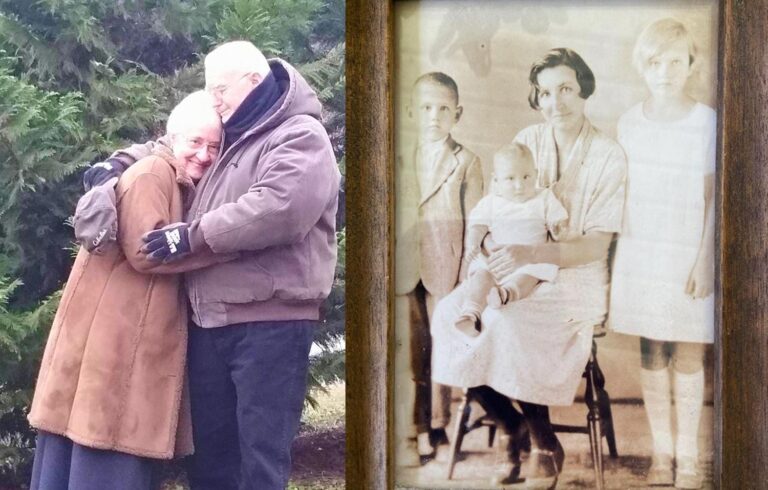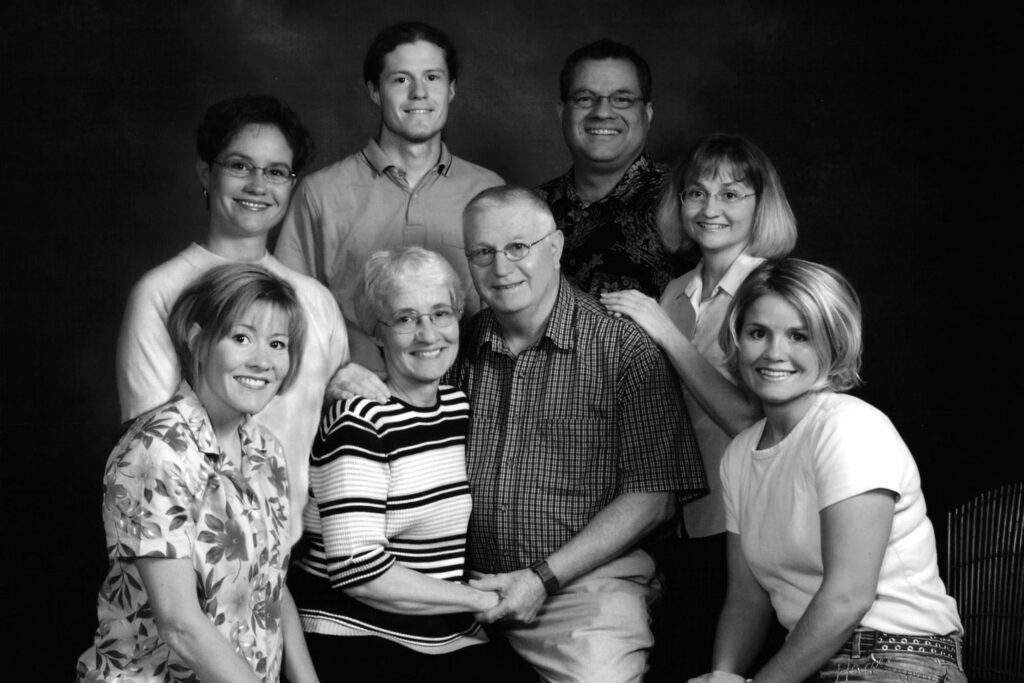
Papa Max surrounded by his family. Photo saved on ArDrive.
Archive + Drive = ArDrive
ArDrive was designed with the archivist in mind. Because, who else would get and love permanent data as much as someone who likes to archive? They get it!
They know the difficult task of saving data for long-periods of time. Typically, multiple complex approaches have been needed to save and pass valuable photos, files, and history onto the next generations.
ArDrive simplifies this whole process.
One of our favourite archivists is Papa Max. Max has discovered ArDrive, used it for archiving, and has helped us (and is helping us) make a better product for everyone.
Our Interview
Why is preserving your family history so important to you?
I began learning about family history as a child. At church, we practiced making 4-generation family tree charts. While growing up, I saw my father make visits with great-aunts and great-uncles, trying to capture family history information before they died and we lost those stories, pictures, and even names of individuals. (Remember, this was pre-internet….)
As we approached the time when my parents were going to die, much of that activity turned towards our own family. My mother transcribed most of my father’s handwritten journals. My father began writing a personal history. Some of my siblings and I, spread across the country, began getting copies of pictures and key documents, pictures of gravestones, etc.
Now, I’m 57 years old. My family has grown up with family history. But unlike previous generations, now we have thousands of digital pictures spread across phones, online storage, old hard drives, etc. The question becomes, how do we make that meaningful for the future family?
What are some of the favourite things that you have preserved about you and your family?
We have my father’s journals. We have copies of Scriptures that my father used and marked throughout his life. We have extensive family history on my mother’s side done by several generations of her family over time. We have some beautiful, old framed pictures from my father’s great-grandfather’s family that we have digitized. Those pictures from those people are rare, unlike our current generation with its thousands of pictures, and we have many of those old pictures. Those are precious.

What were you doing to preserve your family history before ArDrive?
I was storing pictures on a variety of external drives and online storage accounts. Because of space limitations, I had taken to keeping certain types of files in one online account, and other types of files in another online account. Storing big files like family videos was a challenge without paying high subscription fees just to store what I wanted to store for the next 30 years. So, these were only local and not backed up in many places — a dangerous proposition for such valuable content.
Were there any ‘aha’ or lightbulb moments when using ArDrive and permanent data?
It has taken some time to wrap my mind around decentralization. I’m not all the way there yet. But I find value in knowing that my history is not in a single server farm under one government’s control or one corporation’s control. I find value in knowing that it’s also not only on an SSD drive that can be lost or that can fail one day. I like knowing that upon my eventual demise, my family will not have to try to find all the places where we stored photos of people they can’t even identify any longer. They’ll have a single storage place. They won’t have to move the files to rescue them from a defunct online account. They won’t have to make lots of copies to new SSDs to share across the family. The pictures, journals, histories, and stories will just be there for them at the moment when they will care the most about them. That is huge!
What are some of the features you use the most in ArDrive?
I really like the thumbnail previews in the private drives. I like the sharing links. Private drives and encryption is critically important for family history. I’ve learned not to try to organize everything into a single drive, but instead, to split topics into separate drives, usually based on the probably sharing audience. This, because in private drives, one can only share the drive or a file, but not a folder. Organizationally, I also find that it makes more sense. In some cases, I have abandoned a folder (moved it to a “trash” folder to get it out of sight), and re-uploaded content ot a separate drive for a better long-term solution. ArDrive is so economical that this is feasible.
Beyond the archiving feature of family history, how have you been using ArDrive in your day-to-day life?
I took one financial file — a log of paychecks and donations made each month — to use as a test of how well I could use ArDrive “transactionally.” I had been keeping that file in my secure email account (no, not Gmail) that included storage. I had thought that the storage at rest was encrypted as was the email, but alas, it is not (yet). I wanted to treat my data in a more secure way. So I decided to try ArDrive for it. It has worked beautifully, so now I have begun moving other files to ArDrive that maybe aren’t “life archive” files, but are things that I need to reference occasionally, like my amateur radio license, and the testing scripts and instructions for the volunteer work I do administering radio license exams. My sheet music archive is getting uploaded there (once I can organize it a little better). These things don’t change as often as my paycheck log file does, but it is so easy to upload new versions to keep things current that now, ArDrive is my go-to online document storage. I have emptied out Google, Box, and others.
How has permanent data changed the way you see other non-permanent forms of storage?
I now see my Google, Box, Amazon, OneDrive, and iCloud storage accounts as short-term, transactional tools. I don’t use them as archives for storage. I use them as thumb drives for transport. Some realities about online privacy and permanence emerged as I realized that all my photos “belong” to the storage provider. I have experienced what it means to change accounts, close accounts, and move large stores of files from one provider to another. I may know the 5 places things are stored, but will my children know when the time comes? And even if they do know, will they have account access, and for how long? What risks being lost in the fog of time if I don’t get this right? One important goal of estate planning is making things as simple and easy for your survivors as possible. Solving the privacy, permanence, and access issues became my mission.
